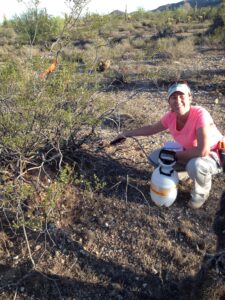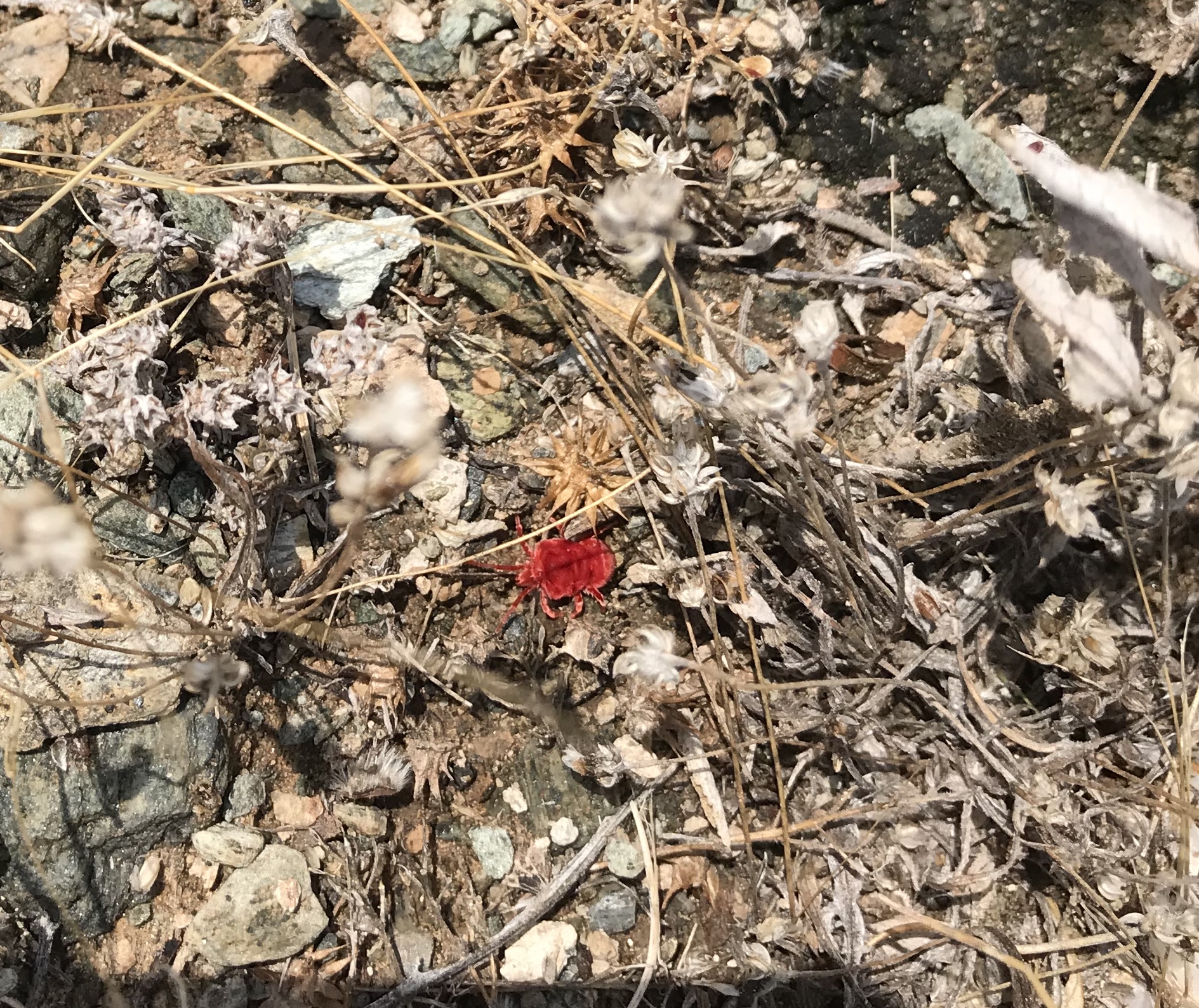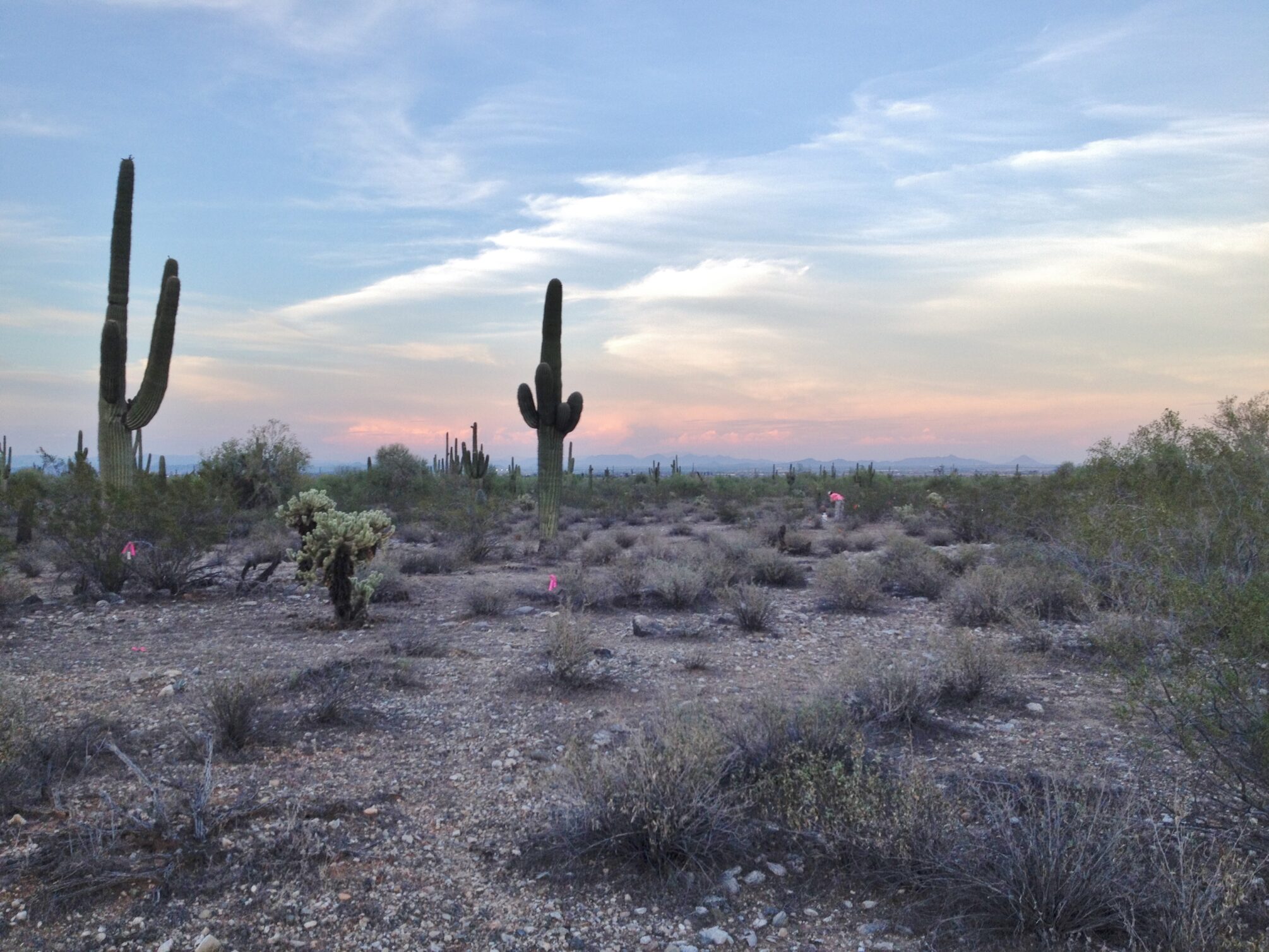An experimental approach takes a ground-level look at the ecological winners and losers of desert soil communities under shifting precipitation regimes in the Central Arizona-Phoenix LTER.
by Emily Ortega, graduate student at the University of Alaska Fairbanks
Under Cover

Credit: Dr. Rebecca Ball, CC BY-SA 4.0.
When it rains, one might pull out an umbrella or run for cover beneath the nearest tree or awning. During dry periods in the desert, one might look for an oasis to avoid the intense dryness and heat. Similarly, a wide variety of soil arthropods rely on local flora to shield them from the desert’s extremes; iconic desert vegetation, such as the fragrant, evergreen creosote bush and the drought-deciduous bursage, act as tiny oases for those invertebrates during dryer periods.
While the most obvious evidence of climate change at some LTER sites might be more frequent heat waves over the past decades, the most dramatic effects at the Central Arizona-Phoenix (CAP) LTER site are changes in precipitation. As a result of climate change, the CAP LTER site and the Sonoran Desert as a whole are expected to experience longer periods of dryness punctuated by more intense rain; in other words, larger rain pulses less frequently. These changes can have dramatic effects on desert communities.
“Water is the key thing,” says Dr. Becky Ball, lead author of a new study that looks at the effects of changing precipitation on the soil arthropod community. As precipitation changes, plant cover in the desert could change, too, and, as a result, the soil arthropod communities that find shelter at their roots might be affected.
Using an experimental approach, Dr. Ball, alongside students Kelly Bergin and Amanda Morrison, wanted to uncover the response of soil arthropods to changing precipitation regimes and the relative abundance of plant cover available to shield those precious invertebrates from extremes in rain or drought. To do this, the team made it rain artificially under the bushes of experimental plots at varied frequencies and pulse lengths. They saw a decreased soil species evenness—the relative distribution of each species— when the frequency of rains decreased, though there was no significant change in the total number of unique taxa in a plot, also known as species richness, under the different precipitation treatments. Communities with no plant cover saw the largest change in diversity in response to shifting precipitation.

Credit: Dr. Rebecca Ball, CC BY-SA 4.0.

Credit: Dr. Rebecca Ball, CC BY-SA 4.0.
Plant type was important, too. The deciduous bursage bushes were dormant during the experimental period, and, without their leaves, the communities beneath responded the same as areas without plants. Hard-bodied species like ants and the velvet mite dominated the community composition under the dormant bursage bushes, their drought-resistance protecting them in these dryer plots where plant-cover was insufficient to maintain soil moisture. Meanwhile, the evergreen creosote bushes provided a wetter and better environment for softer-bodied species like Poduromorpha, an order of Collembola commonly known as springtails.
Long-Term Changes
Plant communities are predicted to change in response to a changing climate at the CAP LTER. The results from this paper make Dr. Ball and colleagues think that changes in the plant community will have a trickle-down effect on the soil communities, such as arthropods, that rely on the buffering capacity of desert flora.
Arthropods themselves also have direct effects on plant communities. For example, the ants that dominate under drought conditions reduce the production of the plants whose seeds they eat. In general, changes to soil arthropod community composition could lead to increased harvesting of plants, fungus, and other insects, leading to changes in the desert ecosystem from the soil-up.

Credit: Dr. Rebecca Ball, CC BY-SA 4.0.
Without moisture to drive the process, arthropods living in the desert also play a key role in nutrient recycling. Arthropods feed on plant detritus and recycle it back to the soils for uptake by local flora. If soil arthropod communities are affected by variations in duration and frequency of precipitation as a result of climate change, likely consequences include reduced nutrient recycling. These changes could have repercussions such as decreased primary production and changes to water quality with broad impacts on key ecosystem players and the nearby city of Phoenix, AZ. This experimental approach is a first look at the bottom-up impacts of climate change on desert precipitation, vegetation, and arthropod communities. As an edge-case—an endmember ecosystem—the CAP LTER site offers a unique perspective on the ecological winners and losers of anthropogenic climate change effects. This study shows that future variations in precipitation regimes can change community structure at the CAP LTER site, which can have lasting changes on water quality, nutrient cycling, and food web structures. Some of these changes, especially water quality, can directly impact the lives of residents in nearby Phoenix, AZ. The CAP LTER site is perfectly situated between the Phoenix metropolitan area and the Sonoran desert to continue studying the effects of climate change across the whole ecosystem, from urban to undeveloped and from humans to the smallest soil arthropods.










